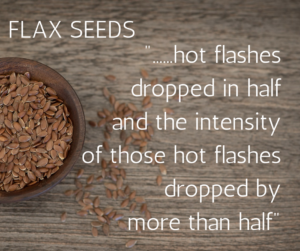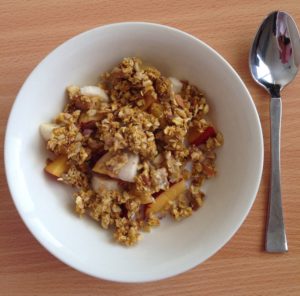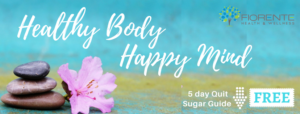Horrid hot flashes & ways to reduce them
The dreaded hot flashes! I hear someone around me mention them with despair almost every day, and although they are not  life threatening they can have a terrible impact on a woman’s (and her surrounding loved ones!) daily comfort.
life threatening they can have a terrible impact on a woman’s (and her surrounding loved ones!) daily comfort.
I often get referred by word of mouth for my Usana Hepaplus to help with menopause (and pms) symptoms and thought I’d share this information on the #1 symptom that menopausal women suffer and also go through some simple, safe solutions.
Before we do that, just some quick info on the root cause of hot flashes.
What causes hot flashes?
As you can imagine it’s all about hormonal balance (or imbalance). Hormones play vital roles in body systems, they’re chemical messengers that relay signals from one cell to another. Even slight fluctuations in the amount or type of hormones produced by the body can trigger big changes, not just to cells but to the functioning of the whole body.
During the menstruating years your estrogen allows for your ovaries to respond when “luteinising hormone” (LH) says to release those eggs every month. When it gets to the point where your estrogen levels start dropping (i.e. perimenopause) those ovaries start to simply ignore the LH.
And guess what your body’s response to this is? It releases adrenaline! This causes your body to heat up for a few minutes until it cools itself back down.
What triggers hot flashes?
You may have already identified some of the triggers of your hot flashes…
Perhaps they’re related to the food and drinks you consume, eg
- coffee,
- spicy foods,
- sugar,
- citrus
- large meals
Maybe they’re related to lifestyle factors, eg
- stress,
- alcohol,
- smoking,
- certain medications or
- intense exercise
Maybe they get worse as your weight slowly climbs. Did you know that in a study referenced below some menopausal women who lost weight were able to eliminate their hot flashes? That’s a win-win!
So what can you do?
Hormone replacement therapy (HRT) in the form of tablets or patches can help symptoms of menopause if they are particularly distressing. But there are more natural approaches, why not give them a try first.
Herbalists have been using herbs and plant compounds to treat hormonal problems for centuries. But scientific interest in phytoestrogens (plant oestrogens) was sparked relatively recently. It happened when researchers noticed that women in Asian countries had far fewer symptoms of menopause compared with women in western countries. A major reason for this, they suggested, could be the larger quantities of phytoestrogens and other plant chemicals eaten as part of traditional Eastern diets.
Phytoestrogens mimic and bind to certain hormone receptors helping to relieve symptoms associated during peri-menopause and after menopause, when levels of oestrogen and progesterone drop.
Foods that contain phytoestrogens
Soy, some clinical studies have shown benefits from eating soy foods, but you have to eat quite large amounts to see the best benefits – around 2-3 cups daily. The active components of soy are isoflavones. I would suggest consuming fermented organic soy products.
Other legumes (peas, beans and lentils) and especially mung beans
Flax contains a “phytoestrogen” named “lignan”. Flax also contains fibre and omega-3 essential fatty acids. Both are powerhouses for better gut and heart health, additional benefit!
One study looked at thousands of women who experienced at least 14 hot  flashes per week. Researchers had them add four tablespoons of flax meal to their day. Yep, just four tablespoons. After 6 weeks the number of hot flashes they had dropped in half and the intensity of those hot flashes dropped by more than half! That’s pretty significant don’t you think? Scientists think that’s due mostly to the lignan content of flax seeds.
flashes per week. Researchers had them add four tablespoons of flax meal to their day. Yep, just four tablespoons. After 6 weeks the number of hot flashes they had dropped in half and the intensity of those hot flashes dropped by more than half! That’s pretty significant don’t you think? Scientists think that’s due mostly to the lignan content of flax seeds.
It’s pretty easy to increase your intake of flax. Try cold pressed flaxseed oil for salads, you can add one or two tablespoons into your smoothie or sprinkle it on just about anything (breakfast, salad, nut butters, etc.). Not to mention how easy it is to add to your baking (see recipe below).
Tip: Flax seeds should be ground up in order to get most of their benefits because much of the healthy compounds in them are securely stored beneath the hard outer shell. However I find whole seeds last longer, I put them in the fridge and I grind them up as needed in my blender/thermomix
If you’re looking for more natural alternatives, these supplements may help:
Black cohosh First used in its native North America to treat conditions that affect women’s reproductive organs, black cohosh has traditionally been used to ease symptoms relating to menstrual problems and inflammation of the uterus or ovaries.
The American College of Obstetricians and Gynecologists stated that black cohosh may help women with vasomotor symptoms (symptoms that affect the diameter or blood vessels) of menopause and has been found to be both safe and effective.
Dong quai Sometimes called the female ginseng, dong quai has been used for centuries in Traditional Chinese Medicine. Combined with other herbs, dong quai is most often used to treat women’s reproductive problems, to relieve cramps associated with painful periods and to improve circulation. According to the US National Institutes of Health, dong quai has been used for both PMS and menopausal symptoms.
Liquorice root is used in traditional Chinese medicine as ‘Qi’ tonic, and has been used as an anti-in ammatory agent.
Chasteberry Used for thousands of years mostly by women to ease menstrual problems and to ease breast pain, chasteberry continues to be used for menstrual problems, such as PMS, as well as for symptoms of menopause.
One more tip..
Exercise regularly – moderate physical exercise reduces the frequency and severity of hot flushes and studies show regular exercise significantly improves emotional and physical wellbeing.
More tips coming up for coping with menopause next week
Nutola – gluten free muesli (with 1 cup flax seeds)
This is a great alternative to sugar loaded store bought meusli, full of yummy nuts and seeds and option of oats
Would like to receive fortnightly recipes & tips like these straight to your inbox? Subscribe >>HERE<<
Can I help you in some way?
FREE 5 Day Quit Sugar Support Program to help you get started on a healthier you
 My 10 Day Cleanse is a great way to nourish your body, rejuvenate your gut, liver, reset your blood sugar & hormones, kick start your weight loss. With yummy, healthy, gut nourishing foods and a supplement package which includes, probiotics to replenish your good bacteria, fibre (absorbs toxins, feeds your good gut bacteria) along with high quality anti oxidants, multi minerals, herbs & phytonutrients to enhance the detox process & support your body.
My 10 Day Cleanse is a great way to nourish your body, rejuvenate your gut, liver, reset your blood sugar & hormones, kick start your weight loss. With yummy, healthy, gut nourishing foods and a supplement package which includes, probiotics to replenish your good bacteria, fibre (absorbs toxins, feeds your good gut bacteria) along with high quality anti oxidants, multi minerals, herbs & phytonutrients to enhance the detox process & support your body.
For more FREE Overall Holistic Health info![]() my Fiorente Health Facebook Page, lots of quick health tips and recipes and motivational quotes
my Fiorente Health Facebook Page, lots of quick health tips and recipes and motivational quotes
If you would like to catch up in person you can make an appointment for a FREE initial consult
I’m looking forward to getting to know each other better
References
- https://www.reuters.com/article/us-fruit-mediterranean/fruit-mediterranean-diet-tied-to-fewer-hot-flashes-idUSBRE93N11A20130424
- http://www.upmc.com/media/NewsReleases/2014/Pages/pitt-study-weight-loss-helps-menopausal-women-combat-hot-flashes.aspx
- https://www.ncbi.nlm.nih.gov/pmc/articles/PMC2753173/
- https://www.thehealthyhomeeconomist.com/170-scientific-reasons-to-lose-the-soy-in-your-diet/
- http://www.usana.com/media/File/products/ANZ/POM/POMPhytelleNewsletterWEB.pdf
- Black Cohosh. O ce of Dietary Supplements, National Institutes of Health. Accessed 23 April 2012. Available from: http://ods.od.nih.gov/ factsheets/BlackCohosh-HealthProfessional/
- A review of the e ectiveness of Cimicifuga racemosa (black cohosh) for the symptoms of menopause. J Womens Health. 1998 Jun;7(5):525-9. Accessed 23 April 2012. Available from: http://www.ncbi.nlm.nih.gov/ pubmed/9650153
- University of Maryland Medical Center. Dong Quai. Accessed 23 April 2012. Available from: http://www.umm.edu/altmed/articles/dong- quai-000238.htm#ixzz1sLYsEKDj
- Dong Quai. Accessed 23 April 2012. Available from: http:// http://www.nlm.nih.gov/ medlineplus/druginfo/natural/936.html
- National Center for Complementary and
- Alternative Medicine. Chasteberry. Last updated July 2010. Accessed on 26 March 2012. Available from: http://nccam.nih.gov/ health/chasteberry
- Treatment for the premenstrual syndrome with agnus castus fruit extract: prospective, randomised, placebo controlled BMJ 2001; 322:134 Published 20 January 2001 Accessed on 26 March 2012. Available from: http://www. bmj.com/content/322/7279/134.full
- http://www.precisionnutrition.com/all-about-menopause
- https://authoritynutrition.com/11-natural-menopause-tips/
- http://www.precisionnutrition.com/incorporating-flax-into-diet
- http://www.precisionnutrition.com/all-about-flax





